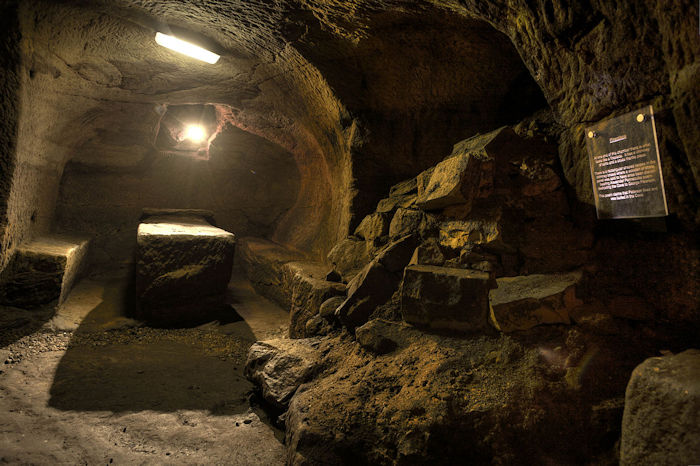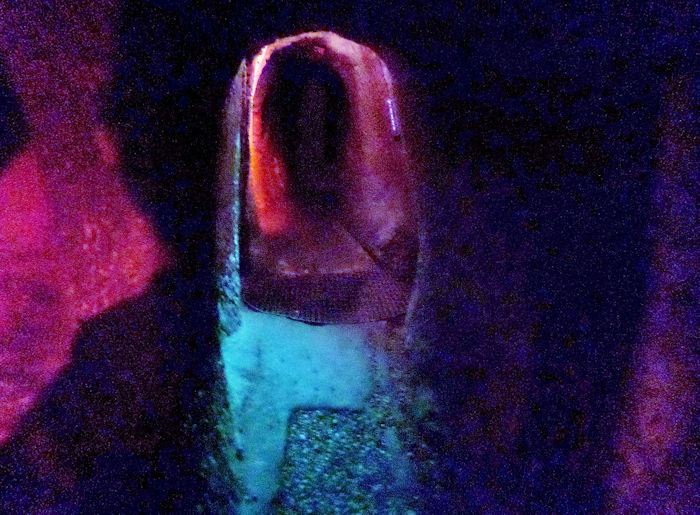Gilmerton Cove: Mysterious Cave System Still Keeps Its Centuries-Old Secrets
A. Sutherland - AncientPages.com - Gilmerton Cove is a mysterious cave system on the outskirts of Edinburgh, Scotland. For a long time, it was considered the work of a blacksmith George Paterson, who used it from 1724 to 1735 (or 1737), according to ancient records.
But there is a problem. Even the most skilled one, this blacksmith, would not have created the entire system himself.
Gilmerton Cove. Credit: John Dale - CC BY-SA 2.0
His claim to have spent five years excavating the place was long accepted at face value, though a moment's thought tells you that such a task would have taken the lifetimes of several hard-working men. So, most probably, he only cleared out the rubble and backfill of a much earlier period.
So the question remains: who were the builders responsible for creating this mysterious underground structure?
Gilmerton Cove is a series of underground passages and chambers hand-carved from sandstone in a former mining village. Initially, the underground complex was lit by openings to the sky, but they were covered long ago.
The caves are connected by a 12-meter main corridor equipped with two entrances, the height of which varies between 1.60 and 3 meters. After five years of restoration work, it was opened in August 2003 and now houses ingenious audio and visual displays. Still, it does not mean that Gilmerton Cove has revealed its old secrets. Various theories about the origin of the place and its destination cannot shed light on the Cove's mysterious past.
Extensive historical and archaeological research has failed, too. However, Gilmerton Cove was the 18th-century residence of the local blacksmith George Paterson, but it has never been confirmed that the man was responsible for any carvings in the Cove.
Usually, many theories and suggestions surround mysterious, unexplained places, including Gilmerton Cove.
Was it once a smugglers' secret place, a gathering place for the Knights Templar? Or perhaps, a covenant hideout or a shelter for someone wanting to hide? No one has clues.
Gilmerton Cove, view of a passage, Edinburgh, Scotland. Credit: Rosser1954 - CC BY-SA 4.0
Extensive archaeological and historical research failed to explain the Cove's mystery once and for all. In 2017, a study by scientists from the University of St Andrews and the University of Edinburgh using ground-penetrating radar revealed that the network of passageways and chambers might be more extensive than previously thought.
In her book "111 Places in Edinburgh That You Shouldn't Miss", Gillian Tait draws our attention to "the scale of the place, and the shape and texture of the womb-like walls, all hewn out of the living rock with tiny strokes of a chisel. But what's even more surprising is the built-in furniture, including long benches and tables, gently curving and beautifully cut from the solid sandstone. One of the tables is horn-shaped and has a deep concave bowl cut into it. It's as if the Flintstones' house had been remodeled by a designer from 20th-century Milan…."
"The underground complex was originally lit by openings to the sky, but these have long since been covered over."
If the workshop was there once, due to lack of ventilation, such working space was never in use. There's a well next to it, but no water and wooden doors separate two smaller rooms.
In the walls of the structure were once holes, which, over time, were sealed. It means that the rooms were once ventilated from above, and the incoming light well-lit the whole system.
The place is undoubtedly old and has been reused many times by many people over at least recent centuries. It is still possible that Gilmerton Cove's true beginnings are much more ancient. Perhaps one day, it will be possible to prove that the Cove, as we call it today, is a sacred prehistoric site. It has already been suggested that it was a Druid temple dated to the times long before the settlement of Edinburgh.
Carved signs of the circus and the coals, clearly visible on the tables, indicate masons and the initials (quite deep) can suggest either the work of a drunker) or someone belonging to society.
However, these are only more or fewer speculations.
Written by – A. Sutherland - AncientPages.com Senior Staff Writer
Updated on November 10, 2023
Copyright © AncientPages.com All rights reserved. This material may not be published, broadcast, rewritten or redistributed in whole or part without the express written permission of AncientPages.com
More From Ancient Pages
-
 Pottery Found On Jiigurru/Lizard Island Rewrites Aboriginal History
Archaeology | Apr 12, 2024
Pottery Found On Jiigurru/Lizard Island Rewrites Aboriginal History
Archaeology | Apr 12, 2024 -
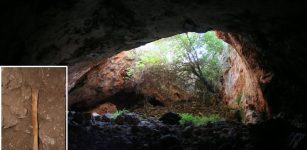 Ancient Human Remains Buried In Spanish Caves Were Subsequently Manipulated And Utilized
Archaeology | Sep 21, 2023
Ancient Human Remains Buried In Spanish Caves Were Subsequently Manipulated And Utilized
Archaeology | Sep 21, 2023 -
 King Sanakht: Mysterious Ancient Egyptian Pharaoh Was A ‘Giant’ – Scientists Say
Archaeology | Aug 9, 2017
King Sanakht: Mysterious Ancient Egyptian Pharaoh Was A ‘Giant’ – Scientists Say
Archaeology | Aug 9, 2017 -
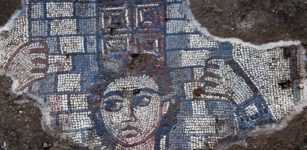 Mosaics Discovered In Ancient Galilean Jewish Village
Archaeology | Jul 10, 2018
Mosaics Discovered In Ancient Galilean Jewish Village
Archaeology | Jul 10, 2018 -
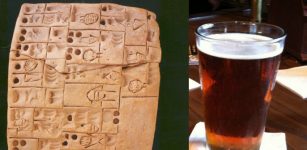 Oldest Evidence Of Beer Was Found On A Sumerian Tablet In Mesopotamia
Ancient History Facts | Jan 23, 2016
Oldest Evidence Of Beer Was Found On A Sumerian Tablet In Mesopotamia
Ancient History Facts | Jan 23, 2016 -
 ‘Euros Of Prehistory’ Were Currency Of People From The Early Bronze Age Of Central Europe
Artifacts | Jan 21, 2021
‘Euros Of Prehistory’ Were Currency Of People From The Early Bronze Age Of Central Europe
Artifacts | Jan 21, 2021 -
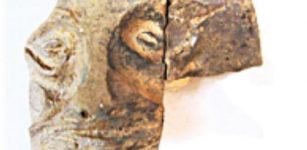 Satyr Mask Discovered In Ancient Greek Emporium Pistiros In Thracians’ Odrysian Kingdom Near Bulgaria’s Vetren
Civilizations | Sep 22, 2015
Satyr Mask Discovered In Ancient Greek Emporium Pistiros In Thracians’ Odrysian Kingdom Near Bulgaria’s Vetren
Civilizations | Sep 22, 2015 -
 600,000-Year-Old Finds Reveal Canterbury Was Home To Britain’s Earliest Humans
Archaeology | Jun 22, 2022
600,000-Year-Old Finds Reveal Canterbury Was Home To Britain’s Earliest Humans
Archaeology | Jun 22, 2022 -
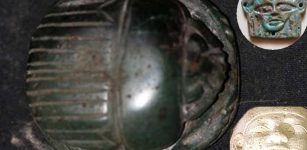 Amulets, Figurines Discovered In Recently Unearthed Limestone Sarcophagus In Minya, Egypt
Archaeology | Oct 15, 2020
Amulets, Figurines Discovered In Recently Unearthed Limestone Sarcophagus In Minya, Egypt
Archaeology | Oct 15, 2020 -
 Nomenclator: Ancient Living-Human Calendar And Address Book
Ancient History Facts | Jul 4, 2018
Nomenclator: Ancient Living-Human Calendar And Address Book
Ancient History Facts | Jul 4, 2018 -
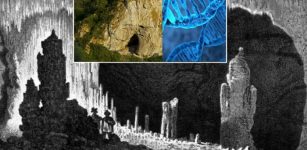 Neanderthals’ History Retrieved From Cave Sediments In Siberia And Spain – New Method
Archaeology | Apr 19, 2021
Neanderthals’ History Retrieved From Cave Sediments In Siberia And Spain – New Method
Archaeology | Apr 19, 2021 -
 How Pre-Industrial Communities in Northeastern Europe Adapted to Climate Changes Over the Past Two Millennia
Archaeology | Feb 3, 2025
How Pre-Industrial Communities in Northeastern Europe Adapted to Climate Changes Over the Past Two Millennia
Archaeology | Feb 3, 2025 -
 Peculiar Bronze Mace Head Left By Unknown Ancient Culture Discovered In Poland
Archaeology | Jul 1, 2019
Peculiar Bronze Mace Head Left By Unknown Ancient Culture Discovered In Poland
Archaeology | Jul 1, 2019 -
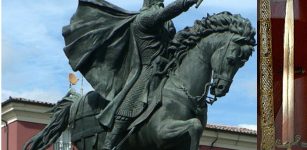 El Cid ’The Lord’ – Medieval Castilian Leader Known For His Courage And Extraordinary Military Skills
Featured Stories | Sep 20, 2021
El Cid ’The Lord’ – Medieval Castilian Leader Known For His Courage And Extraordinary Military Skills
Featured Stories | Sep 20, 2021 -
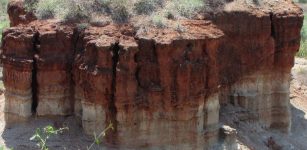 Spectacular Olduvai Gorge And Early Hominid Fossils Found In East Africa
Archaeology | Nov 26, 2016
Spectacular Olduvai Gorge And Early Hominid Fossils Found In East Africa
Archaeology | Nov 26, 2016 -
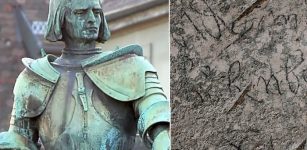 A Graffiti Inscription With The Name Of Knight Adrian von Bubenberg – Found On Mount Zion In Jerusalem
Archaeology | Nov 30, 2022
A Graffiti Inscription With The Name Of Knight Adrian von Bubenberg – Found On Mount Zion In Jerusalem
Archaeology | Nov 30, 2022 -
 Long-Lost Anglo-Saxon Monastery Ruled By Queen Cynethryth Of Mercia Discovered By Archaeologists
Archaeology | Aug 19, 2021
Long-Lost Anglo-Saxon Monastery Ruled By Queen Cynethryth Of Mercia Discovered By Archaeologists
Archaeology | Aug 19, 2021 -
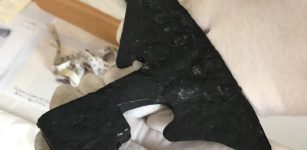 Secrets Of An Unusual And Mysterious Medieval Danish Axe Revealed By Scientist
Archaeology | Nov 25, 2022
Secrets Of An Unusual And Mysterious Medieval Danish Axe Revealed By Scientist
Archaeology | Nov 25, 2022 -
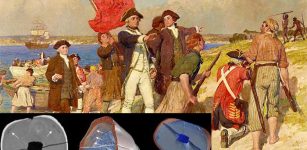 Unique Study Of Skeletal Remains Reveals Grave Health Of Australian Pioneer Settlers
Archaeology | Apr 7, 2022
Unique Study Of Skeletal Remains Reveals Grave Health Of Australian Pioneer Settlers
Archaeology | Apr 7, 2022 -
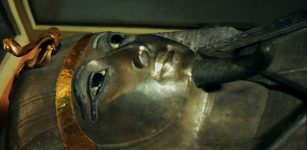 Pharaoh Psusennes I Was Buried In The Silver Coffin Decorated With Gold
Featured Stories | Jan 25, 2021
Pharaoh Psusennes I Was Buried In The Silver Coffin Decorated With Gold
Featured Stories | Jan 25, 2021

